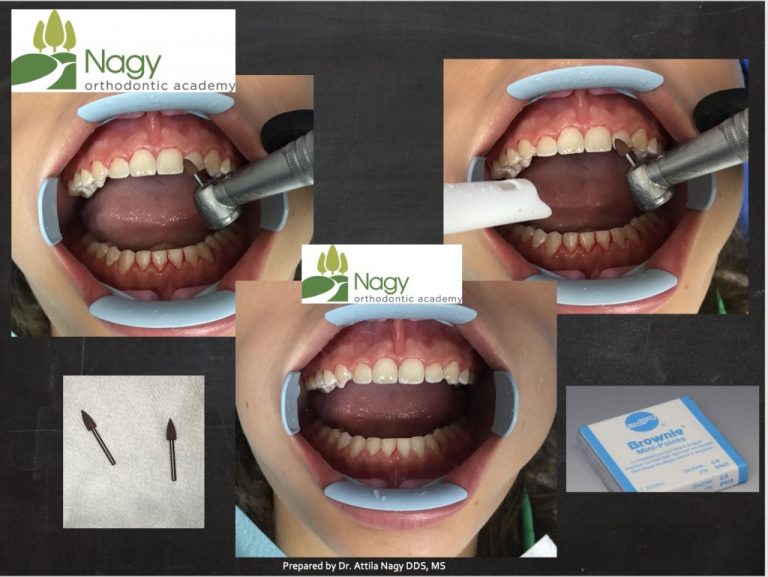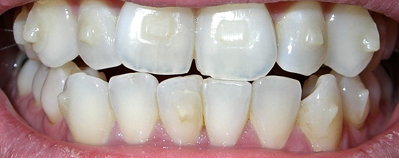Regret Extracting Teeth for Braces: Avoiding Orthodontic Woes
Regretting tooth extraction for braces is not uncommon. It’s crucial to understand the procedure’s impact.
Deciding to extract teeth for braces often aims at creating space for alignment and improving dental aesthetics. This decision, which should be made after thorough consultation with an orthodontic specialist, can sometimes lead to regret if the outcomes aren’t as expected or if unforeseen issues arise.
Orthodontic treatments, including braces, are individualized, so what works for one patient may not be ideal for another. Ensuring that the extraction is truly necessary is key, as is understanding that braces, with or without tooth removal, involve significant changes to one’s dental structure. Proper communication with your orthodontist and a clear insight into the treatment plan can help prevent regret and dissatisfaction with the decision to extract teeth for braces.
Understanding Teeth Extraction For Braces
Understanding Teeth Extraction for Braces is an essential step in some orthodontic treatments. Before deciding to get braces, many patients face the possibility of tooth extraction. The process may seem daunting, but it’s important to understand why this procedure might be necessary. Extracting teeth for braces aims to create space, improve bite alignment, and achieve a harmonious smile. Let’s delve into the specifics behind this common orthodontic strategy.
The Orthodontic Rationale Behind Tooth Extraction
Orthodontists may suggest tooth extraction as part of a treatment plan for a variety of reasons. When the jaw is too small to accommodate all of the teeth or there’s significant overcrowding, removing one or more teeth can make the needed space for the remaining teeth to align properly. In cases where a bite is misaligned, such as an overbite or underbite, extractions can help in correcting these issues, resulting in better functional and aesthetic outcomes.
Types Of Situations Where Extraction Is Considered
- Severe Overcrowding: When there isn’t enough room in the mouth for all of the teeth.
- Impacted Teeth: Teeth that are trapped below the gum line may require removal to prevent complications.
- Protruding Teeth: Protruding teeth are more susceptible to injury and may be extracted for protection and alignment purposes.
- Bite Correction: Removal of teeth can sometimes be necessary to accomplish bite adjustments and proper jaw alignment.
Potential Long-term Impacts Of Tooth Removal
Extracting teeth for orthodontic purposes is not without long-term considerations. While creating space is necessary for alignment, the absence of natural teeth can sometimes lead to bone loss in the jaw over time, which is a natural process called resorption. Proper alignment, however, often bolsters oral health, so the benefits of extraction frequently outweigh the drawbacks. Orthodontic treatment plans that include extractions are carefully crafted to minimize long-term adverse effects while maximizing the health and aesthetics of the patient’s smile.
Regret Extracting Teeth: Signs And Symptoms
Making the decision to extract teeth for orthodontic purposes is not one to be taken lightly. While the primary aim is to achieve a harmonious smile, some individuals may experience regret after undergoing tooth extraction for braces. Here, we’ll delve into the different signs and symptoms that might indicate regret from such a decision, spanning the emotional repercussions, dissatisfaction with orthodontic outcomes, and the physical indications that something might feel amiss.
Emotional Effects Of Premature Tooth Extraction
The decision to extract teeth can have a profound emotional impact on a person. It’s normal to feel a mix of emotions, from relief at progressing towards a straighter smile to concern over the changes to one’s oral structure. Here are some potential emotional effects:
- Mourning the loss of a natural part of the body
- Feelings of regret or doubt, wondering if the right choice was made
- Impacted self-esteem during the adjustment period
- Anxiety about the final results of orthodontic treatment
Identifying Discontent With Orthodontic Results
Not everyone is satisfied with the outcome of their orthodontic treatment, and distinguishing this discontent is crucial for well-being. Signs include:
- Disappointment with the appearance of one’s smile
- Feeling that the gaps left by extraction are noticeable or aesthetically displeasing
- Persistent discomfort or difficulty in adapting to the new dental layout
- A sense that the expected benefits of the extractions weren’t realized
Acknowledging these concerns is the first step towards finding solutions, whether they involve further orthodontic adjustments or other dental procedures.
Physical Manifestations Of Regret Or Disharmony
Emotional responses can often align with physical manifestations. Below are some indicators:
| Physical Signs | Underlying Concern |
|---|---|
| Altered speech patterns | Possible spacing issues affecting pronunciation |
| Changes in bite function | Maladjustment post-extraction leading to bite issues |
| Recurring discomfort or pain | Healing complications or adjustment-related pains |
| Unsatisfactory facial aesthetics | Concerns about how tooth loss has changed facial structure |
Physical signs such as these warrant a conversation with your orthodontist. They can offer reassurance, adjustments, or alternative options to alleviate any discomfort or regret.
Orthodontic Alternatives To Teeth Removal
The decision to remove teeth for braces often comes with apprehension and uncertainty. While traditional orthodontic approaches may suggest extraction as a means to create space, modern dentistry offers alternatives. Current advancements in orthodontic treatments provide solutions that minimize, or even eliminate, the need for teeth removal. Let’s delve into the innovative and less invasive methods that are changing smiles without the need for extraction.
Non-extraction braces strategiesNon-extraction Braces Strategies
The philosophy of preserving natural teeth leads to a host of non-extraction strategies in orthodontics. Techniques such as dental expansion or phased treatments can even out spacing issues without pulling teeth. Here are several key strategies:
- Arch Expansion: Devices such as palatal expanders increase the arch size, creating more room for teeth.
- Interproximal Reduction (IPR): Also known as “slenderizing,” it involves carefully shaving tiny amounts of enamel from between the teeth to gain space.
- Space Maintainers: These devices hold the space for adult teeth when baby teeth are lost prematurely, preventing crowding.
- Phased Treatments: Starting orthodontic care at an early age can guide the growth of the jaw and position of the teeth, possibly preventing the need for future extractions.
Advances In Orthodontic Technology
Innovations in orthodontic technology are central to providing non-extraction treatments. Cutting-edge tools such as digital imaging and 3D modeling contribute to precise treatment planning. The use of high-tech materials like temperature-activated wires and clear aligners offers greater control over tooth movement, which can lead to more efficient use of available space. Computers and software are now vital in calculating the best course of action for each unique case.
Individualized treatments based on dental structureIndividualized Treatments Based On Dental Structure
Every smile is unique, and an orthodontic treatment plan should reflect that individuality. Customized care is at the forefront of non-extraction orthodontics. Specialists consider factors such as the patient’s facial structure, dental anatomy, and the long-term health of the jaw and teeth. The goal is to achieve optimal functional and aesthetic results while preserving the integrity of the natural dentition. Orthodontists can now take a holistic approach, improving the alignment of teeth while also considering the patient’s overall appearance and oral health.

Credit: decisionsindentistry.com
Avoiding Orthodontic Woes With Informed Decisions
Embarking on the journey towards a perfect smile often involves braces, and sometimes, the preliminary step of extracting teeth. This measure is not without its controversy, sparking a debate about its necessity and consequences. Knowledge is power, and making informed decisions is crucial to avoid orthodontic woes. Understanding the full spectrum of ramifications tied to tooth extraction for braces can guide you to a smile that’s both beautiful and achieved with minimal regret.
Understanding The Pros And Cons Of Tooth Extraction
Tooth extraction, in the context of orthodontic care, is often suggested to address overcrowding or to improve bite alignment. But is it always necessary? Delving into the pros and cons is a critical step:
| Pros | Cons |
|---|---|
|
|
Clearly, each case demands a unique evaluation. Discussing these factors is essential to ensure that tooth extraction is truly in your best interest.
The Role Of Second Opinions In Orthodontic Care
Second opinions are not about mistrust but about empowerment. They offer a platform for comparison and confidence in your orthodontic plan. Even when a trusted professional recommends extraction, a second opinion can reaffirm the decision or propose alternative treatment options.
- Validation: Concurring opinions can solidify your decision.
- Alternatives: Discovering different methods, such as expansion or aligners, that could negate the need for extraction.
- Peace of Mind: Ensuring all avenues have been explored before settling on an invasive procedure.
Questions To Ask Your Orthodontist Before Agreeing To Extraction
Clear communication with your orthodontist is the bedrock of a successful treatment plan. Prior to agreeing to tooth extraction, arm yourself with information by asking the following critical questions:
- What are the long-term implications of the extraction for my dental and facial aesthetics?
- Are there any viable alternatives to tooth extraction in my case?
- What are the risks involved, and how do they compare with the desired benefits?
- How will extraction impact my overall oral function, such as biting and chewing?
- What are the post-operative care considerations and recovery timeline?
Thorough responses to these inquiries will guide you towards a confident leap in your orthodontic journey, with no stone left unturned.
Aftercare: Mitigating Regrets Post-extraction
Deciding to extract teeth for braces often follows careful consideration, balancing the promise of a future perfect smile against the immediate discomfort. Once the decision is made, the focus shifts to aftercare, an area pivotal in minimizing doubt and regret. Proper aftercare not only accelerates healing but also ensures that the final orthodontic results bring satisfaction.
Coping With The Immediate Aftermath Of Extraction
Immediate dental aftercare is crucial for healing and comfort. Here are key steps:
- Follow the dentist’s instructions thoroughly, including any prescribed medications to manage pain and prevent infection.
- Gently apply ice packs to reduce swelling and soothe the area.
- Stick to soft foods to avoid irritating the extraction site.
- Avoid strenuous activity for a few days post-extraction to reduce the risk of bleeding.
Long-term Dental Care To Adapt To Changes
- Adhere to impeccable oral hygiene to accommodate your braces and to ensure healthy gums.
- Regular visits to the orthodontist are vital for monitoring progress and making any necessary adjustments to the treatment plan.
- Use of specialized interdental brushes to clean around braces effectively.
- Consider a water flosser for an easy and efficient clean.
Emotional Support And Adjustment Options Available
Extracting teeth for braces can be mentally challenging. Emotional support is important:
| Support Method | Benefits |
|---|---|
| Peer Support | Connecting with others who have been through similar experiences can provide comfort and practical tips. |
| Professional Counseling | If emotional distress is significant, professional help can equip you with strategies to cope. |
| Visual Progress Tracking | Documenting changes in your smile helps focus on the positive outcomes of the treatment. |
Every individual reacts differently to the changes that occur with dental extractions, but with the right aftercare, one can ensure a smoother transition into a future with a healthier, more aligned smile.
Conclusion
To sum up, reflecting on tooth extraction for braces often brings mixed feelings. It’s crucial to weigh the benefits against potential regrets. Always consult with a dental professional to explore all options and future impacts. Remember, each smile journey is unique and personal.
Prioritize your long-term dental health and confidence.


